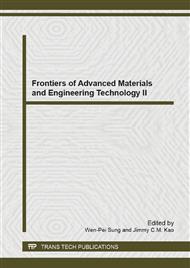p.1134
p.1138
p.1142
p.1146
p.1150
p.1156
p.1160
p.1164
p.1169
An Improved Three-Dimensional Medical Image Segmentation Approach
Abstract:
This paper presents an three-dimensional medical image segmentation approach based on Live-Wire algorithm, through the virtual slices extraction to transform the direction of the segmentation from parallel direction into meridian direction, the amount of user interaction is independent of the number of the sequence of medicine images, improves the automation level of medicine images segmentation. This paper also improved the efficiency of traditional Live-Wire algorithm by four binary heap. Experiment shows that the approach can segmented the interest objects from the sequence of medical images rapidly and accurately, with less user interaction.
Info:
Periodical:
Pages:
1150-1155
Citation:
Online since:
April 2014
Authors:
Price:
Сopyright:
© 2014 Trans Tech Publications Ltd. All Rights Reserved
Share:
Citation:


